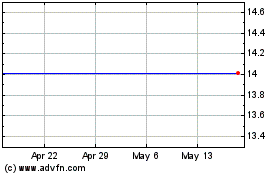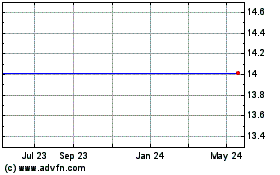Affymetrix Announces New ChIP-on-Chip Array Product Line; New Whole-Genome Tools Help Scientists Discover DNA-Protein Interacti
March 27 2006 - 8:00AM
Business Wire
Affymetrix Inc. (Nasdaq:AFFX) announced today the launch of nine
tiling array products for five different organisms, further
expanding the industry's broadest selection of whole-genome
microarrays. Researchers in any laboratory can use the GeneChip(R)
tiling arrays to map sites of DNA-protein interaction in chromatin
immunoprecipitation (ChIP)-on-chip experiments, discover new RNA
transcripts or investigate global epigenomic changes like
methylation or acetylation. Affymetrix tiling arrays deliver an
unbiased view of entire genomes, enabling scientists to look beyond
the known protein-coding gene sequences and thoroughly study gene
structure, function and regulation. Scientists using the tiling
arrays have reported unexpected functions for already known genes
and new functions for previously unexplored parts of the genome.
Several seminal manuscripts have already been published in major
scientific journals, including Science, Cell and Genome Research.
"We are extremely pleased with the performance of the GeneChip
tiling arrays for mapping transcription factor binding sites by
ChIP-on-chip," said Myles Brown, M.D., associate professor of
Medicine, Harvard Medical School and participant in Affymetrix'
Tiling Array Early Access Program. "These arrays have allowed us to
comprehensively explore the non-repetitive regions of the entire
human genome. This unbiased approach is already leading us to
important new insights into the gene regulatory networks controlled
by steroid hormones and their receptors." For the past six years,
Affymetrix scientists have been pioneering tiling microarray
technology. Thomas R. Gingeras, Ph.D., vice president of biological
science, and his team at Affymetrix Research Laboratories have used
the tiling arrays to uncover broad transcriptional activity in
large regions of the genome that were once considered "junk" DNA.
"Affymetrix tiling array technology is revealing a very important
and unappreciated genetic realm that is challenging fundamental
concepts of biology," said Gingeras. "Using these arrays, we have
been able to discover novel non-coding RNA transcripts and map the
sites of DNA-protein interactions." Tiling Array System Affymetrix
tiling arrays are built on the same GeneChip technology that has
been the industry standard in microarray research for the past
decade. The high-density tiling array sets interrogate all of the
non-repetitive portions of the various genomes. For example, the
human tiling arrays interrogate nearly 90 million data points at
regular 35 base pair intervals across the human genome. The
complete tiling array systems include an assay kit, analysis
software and an integrated browser that enables researchers to
compare experimental results to computational results. Affymetrix
has also released a tested and qualified assay protocol for
chromatin immunoprecipitation experiments. The following tiling
array products are available today: Whole-genome Human Tiling
Arrays -- Human Tiling 2.0R Array Set -- seven array set designed
for ChIP-on-chip experiments (A-G arrays also available separately)
-- Human Promoter 1.0R Array -- one array comprised of more than
4.6 million probes tiled to interrogate more than 25,500 human
promoter regions, enabling researchers to easily identify thousands
of regulatory sequences Whole-genome Mouse Tiling Arrays -- Mouse
Tiling 2.0R Array Set -- seven array set for ChIP-on-chip
experiments (A-G arrays also available separately) -- Mouse
Promoter 1.0R Array -- one array comprised of more than 4.6 million
probes tiled to interrogate more than 28,000 mouse promoter
regions, enabling researchers to easily identify thousands of
regulatory sequences Whole-genome Tiling Array Supporting Products
-- GeneChip WT Double-Stranded DNA Terminal Labeling Kit --
Affymetrix Tiling Analysis Software (TAS) -- Integrated Genome
Browser (IGB) -- Affymetrix Chromatin Immunoprecipitation Assay
Protocol The following tiling array products will be available
during the second quarter: Whole-genome Human Tiling Arrays --
ENCODE01 1.0R Array -- one array designed to study the pilot ENCODE
regions of DNA, or approximately one percent of the human genome.
The ENCODE Project (Encyclopedia of DNA Elements) has been
undertaken to identify all of the functional elements of the human
genome sequence. -- Chromosome 21/22 1.0R Array Set -- three array
set designed to study human chromosomes 21 and 22 Whole-genome
Model Organism Tiling Arrays -- Arabidopsis Tiling 1.0R Array -- S.
cerevisiae Tiling 1.0R Array -- S. pombe Tiling 1.0FR Array The
latest arrays complement the recently launched Human and Mouse 1.0R
Tiling Array Sets, which are 14 array sets for whole-genome
transcript mapping. For more information on the complete family of
Affymetrix GeneChip tiling arrays, please visit the company's Web
site at:
http://www.affymetrix.com/products/application/quantitation.affx.
Further Reading Scientific Publications -- Review of different
whole-genome microarray designs and applications to obtain a wide
variety of genomic-scale information - Mockler T et al.
Applications of DNA Tiling Arrays for Whole-Genome Analysis.
Genomics. 2005;85:1-15. -- Scientists at the Dana-Farber Cancer
Institute mapped the association of the estrogen receptor with the
complete nonrepetitive sequence of human chromosomes 21 and 22 by
combining chromatin immunoprecipitation with tiled microarrays --
Carroll J et al. Chromosome-wide Mapping of Estrogen Receptor
Binding Reveals Long-range Regulation Requiring the Forkhead
Protein Fox A1. Cell. 2005; 122:33-43. -- Affymetrix scientists
used Human Chromosome 21 and 22 tiling arrays to prove that the
millions of newly-discovered RNA molecules are turned on and off by
the same regulators used by protein-coding genes -- Cawley S et al.
Unbiased mapping of transcription factor binding sites along human
chromosomes 21 and 22 points to widespread regulation of noncoding
RNAs. Cell. 2004;116(4):499-509. PMID: 14980218. -- Scientists at
Harvard University mapped histone H3 lysine 4 di- and
trimethylation and lysine 9/14 acetylation across the nonrepetitive
portions of human chromosomes 21 and 22 and compared patterns of
lysine 4 dimethylation for several orthologous human and mouse loci
-- Bernstein B et al. Genomic Maps and Comparative Analysis of
Histone Modification in Human and Mouse. Cell. 2005;120:169-181. --
Affymetrix scientists used Human Chromosome 21 and 22 tiling arrays
to find that there is an order of magnitude more transcription than
accounted for by current annotations - Kapranov P et al.
Large-scale transcriptional activity in chromosomes 21 and 22.
Science. 2002;296:916-9. -- The ENCyclopedia Of DNA Elements
(ENCODE) Project aims to identify all functional elements in the
human genome sequence - ENCODE Consortium, The ENCODE Project.
Science. 2004;306:636-640. -- Scientists at Princeton developed a
software tool for to predict single nucleotide polymorphisms using
GeneChip S.cerevisiae 1.0R Tiling Array. - Gresham et al.
Genome-wide Detection of Polymorphisms at Nucleotide Resolution
with a Single DNA Microarray. Science. 2006; March 9; (Epub ahead
of print). Affymetrix Microarray Bulletin Interviews -- Struhl,
Kevin. Interview with Myles Brown. "Thousands of Previously Unknown
Transcription Factor Binding Sites Mapped Using Tiling
Microarrays." Affymetrix Microarray Bulletin 2005 October
1;1(4):1-5. To view the story:
http://www.microarraybulletin.com/community/article.php?p=44 --
Liu, Shirley. Interview with David Nix. "New Bioinformatics
Algorithm Predicts Forkhead Protein Plays a Role in Breast Cancer
Estrogen Response." Affymetrix Microarray Bulletin 2005 October
1;1(4):5-8. To view the story:
http://www.microarraybulletin.com/community/article.php?p=45 --
Dutta, Anindya. Interview with Michael Botchan. "Highest Resolution
Study of Genome Replication Surprises Scientists with Unexpected
Timing in S-phase." Affymetrix Microarray Bulletin 2005 October
1;1(4):12-15. To view the story:
http://microarraybulletin.com/community/article.php?p=43 --
Quackenbush, John. Interview with Paul Bertone. "Developing Tools
and Methodologies for Whole-genome Transcript Mapping." Affymetrix
Microarray Bulletin 2005 April 1;1(1):18-21. To view the story:
http://www.microarraybulletin.com/community/article.php?p=14 About
Affymetrix: Affymetrix scientists invented the world's first
microarray in 1989 and began selling the first commercial
microarray in 1994. Since then, Affymetrix GeneChip(R) technology
has become the industry standard in molecular biology research.
Affymetrix technology is used by the world's top pharmaceutical,
diagnostic and biotechnology companies as well as leading academic,
government and not-for-profit research institutes. More than 1,400
systems have been installed around the world and nearly 4,000
peer-reviewed papers have been published using the technology.
Affymetrix' patented photolithographic manufacturing process
provides the most information capacity available today on an array,
enabling researchers to use a whole-genome approach to analyzing
the relationship between genetics and health. Affymetrix is
headquartered in Santa Clara, Calif., with subsidiaries in Europe
and Asia, as well as manufacturing facilities in Sacramento,
Calif., and Bedford, Mass. The company has about 1,000 employees
worldwide. For more information about Affymetrix, please visit the
company's Web site at www.Affymetrix.com. All statements in this
press release that are not historical are "forward-looking
statements" within the meaning of Section 21E of the Securities
Exchange Act as amended, including statements regarding Affymetrix'
"expectations," "beliefs," "hopes," "intentions," "strategies," or
the like. Such statements are subject to risks and uncertainties
that could cause actual results to differ materially for Affymetrix
from those projected, including, but not limited to: risks of the
Company's ability to achieve and sustain higher levels of revenue,
higher gross margins, reduced operating expenses; uncertainties
relating to technological approaches, manufacturing (including
risks related to the Company's ability to achieve hoped-for
manufacturing yields for certain array products, including the
ability to identify and resolve manufacturing problems), product
development (including uncertainties relating to commercial and
technological success of the GeneChip Tiling Arrays discussed in
this press release); personnel retention; uncertainties related to
cost and pricing of Affymetrix products; dependence on
collaborative partners; uncertainties relating to sole source
suppliers; uncertainties relating to FDA and other regulatory
approvals; competition; risks relating to intellectual property of
others and the uncertainties of patent protection and litigation.
These and other risk factors are discussed in Affymetrix' Form 10-K
for the year ended December 31, 2005, and other SEC reports,
including its Quarterly Reports on Form 10-Q for subsequent
quarterly periods. Affymetrix expressly disclaims any obligation or
undertaking to release publicly any updates or revisions to any
forward-looking statements contained herein to reflect any change
in Affymetrix' expectations with regard thereto or any change in
events, conditions or circumstances on which any such statements
are based. NOTE: Affymetrix, the Affymetrix logo and GeneChip are
registered trademarks owned or used by Affymetrix Inc.
Affymetrix (NASDAQ:AFFX)
Historical Stock Chart
From Jun 2024 to Jul 2024

Affymetrix (NASDAQ:AFFX)
Historical Stock Chart
From Jul 2023 to Jul 2024
